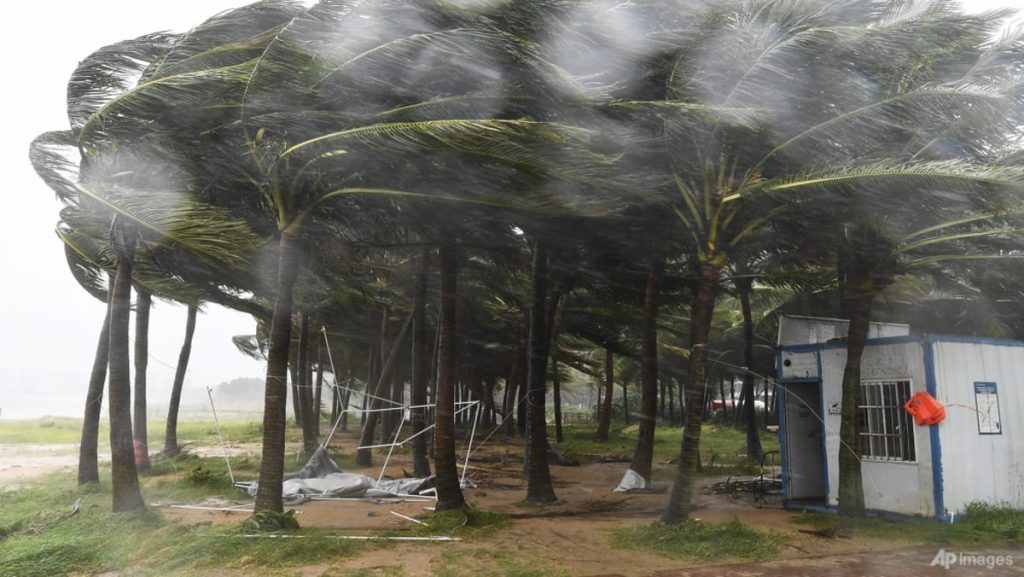Super Typhoon Yagi, the most powerful storm in Asia this year, made landfall in China’s Hainan province, leading to power outages and heavy rain. With winds of 234kmh near its center, Yagi is considered the second-strongest tropical cyclone in 2024 so far, after Hurricane Beryl in the Atlantic. The storm, which had intensified since causing 16 deaths in the Philippines, hit Wenchang in Hainan on Friday afternoon, causing widespread power outages affecting 830,000 households.
Xinhua reported that a 7,000-member emergency team was assembled by the provincial power supply department to begin repairs as soon as possible. By Friday night, power had been restored to 260,000 households in Hainan. Prior to Yagi’s arrival, transportation and businesses on the island had been suspended, with residents advised to stay indoors. The storm had also disrupted activities in Hong Kong, Macau, Guangdong province, and airports in Vietnam, impacting millions of people in its path.
The impact of Super Typhoon Yagi extended beyond China, affecting neighboring countries like Hong Kong, Macau, Vietnam, and Laos. The storm forced the closure of schools, businesses, and transportation systems, disrupting daily life for millions of people in the region. Airlines canceled flights, ferries were halted, and authorities urged residents to stay indoors to ensure their safety. The effects of the storm were felt across multiple sectors, highlighting the need for preparedness and response measures to mitigate its impact.
As one of the most intense storms in the Pacific basin this year, Yagi serves as a stark reminder of the destructive power of natural disasters. With rising global temperatures leading to more frequent and severe weather events, communities and governments must be equipped to handle the aftermath of such storms. The resilience of infrastructure, emergency response teams, and the general population are crucial in mitigating the impact of extreme weather events like Yagi. Cooperation among countries in the affected region is also key to managing the aftermath and providing assistance to those in need.
The response to Super Typhoon Yagi highlighted the importance of having robust emergency preparedness plans in place. As the storm brought down power lines and disrupted services across Hainan province, authorities acted swiftly to restore electricity to affected households. The coordination of emergency teams and resources played a critical role in responding to the storm’s impact, with repairs initiated as soon as conditions allowed. The resilience of communities in the face of such disasters underscores the need for ongoing investment in disaster management and risk reduction strategies.
Moving forward, the aftermath of Super Typhoon Yagi will necessitate long-term recovery efforts to rebuild communities and infrastructure affected by the storm. As residents in the region work to recover from the devastation, authorities will need to assess the damage, prioritize reconstruction efforts, and support those who have been displaced or affected by the storm. The lessons learned from Yagi will inform future disaster response strategies, highlighting the need for proactive measures to mitigate the impact of extreme weather events and protect vulnerable populations. By investing in disaster resilience and preparedness, communities can better withstand the impact of future storms and minimize the loss of life and property.













